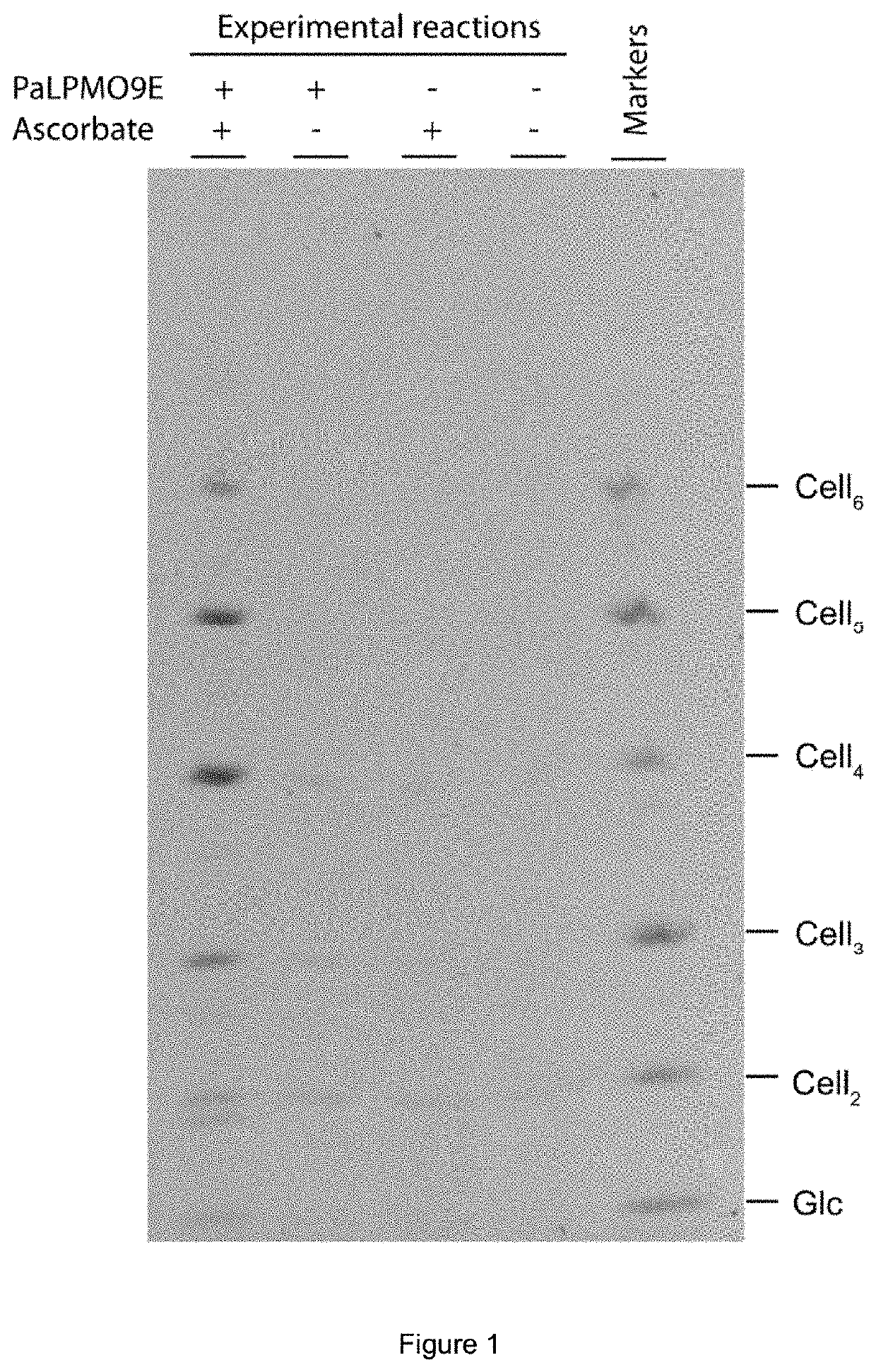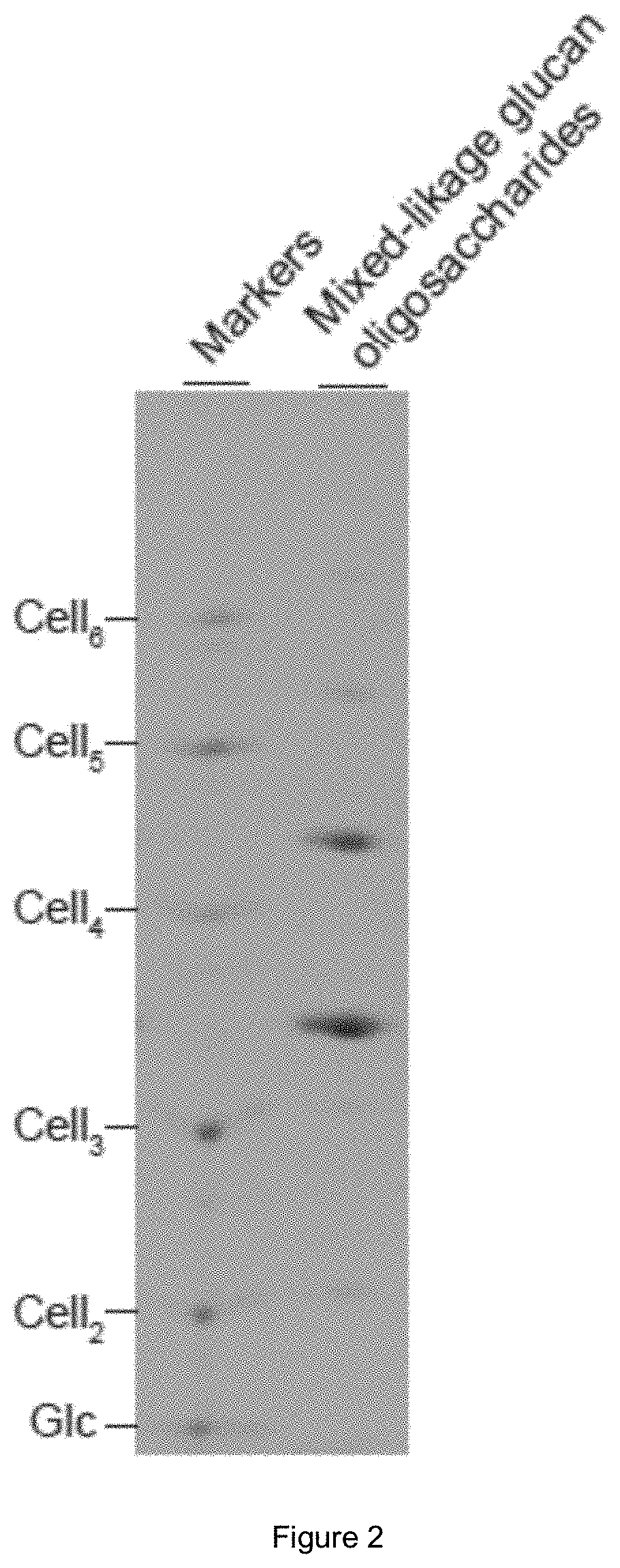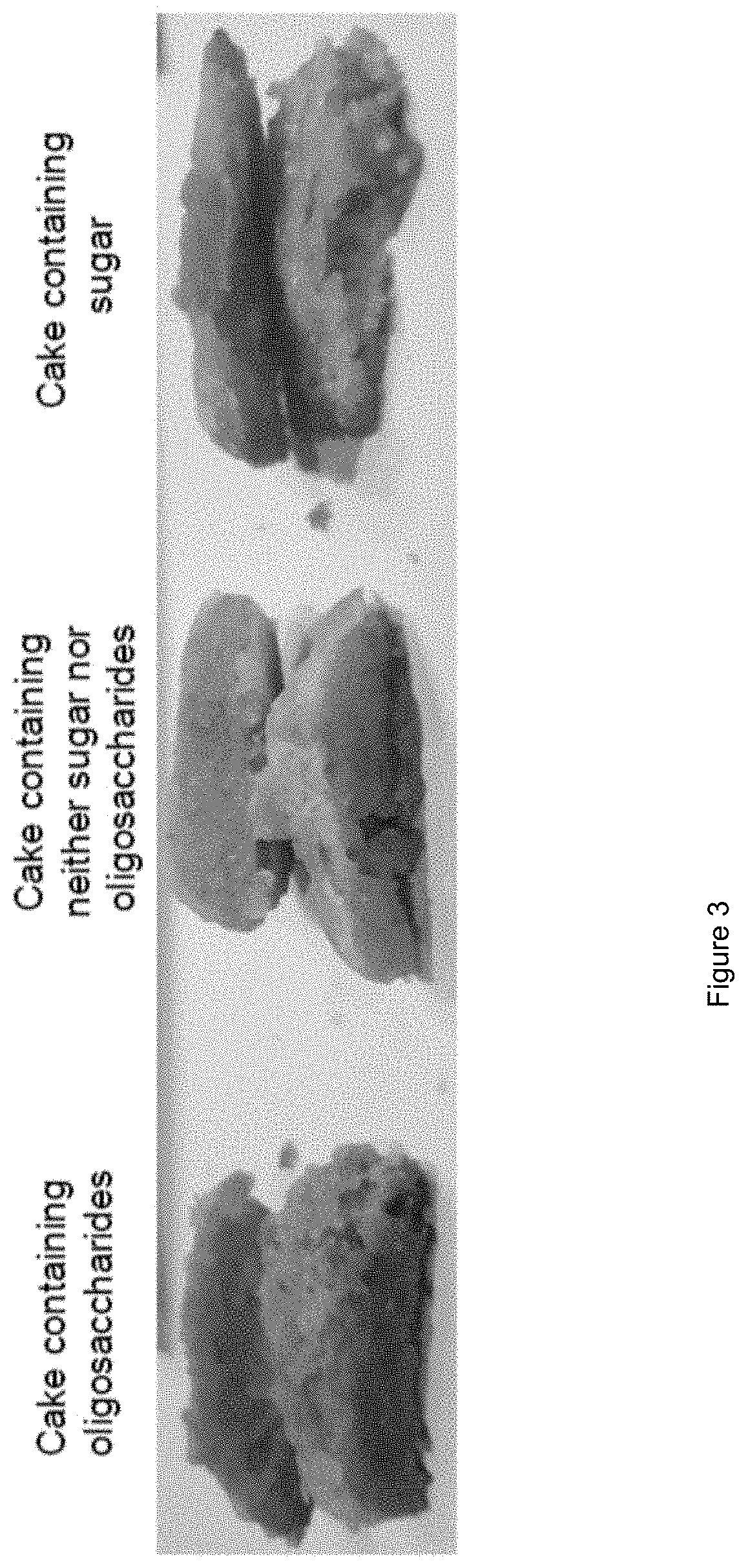Method of production
- Summary
- Abstract
- Description
- Claims
- Application Information
AI Technical Summary
Benefits of technology
Problems solved by technology
Method used
Image
Examples
example 1
ring Oligosaccharides from Cellulose Using an LPMO
[0088]1. Phosphoric acid-swollen cellulose (PASO) was prepared by making a slurry of 1 g Avicel cellulose (Sigma-Aldrich) with 3 ml H2O before adding 30 ml ice-cold phosphoric acid and incubating at 0° C. for 1 h. The cellulose was then washed numerous times with water until the flowthrough had a neutral pH before use in reactions.
[0089]2. Apo-PaLPMO9E (SEQ ID NO:1) was pre-incubated for 0.5-1 h at 5° C. in 0.9 stoichiometric Cu(II)(NO3)2 immediately before enzyme reactions.
[0090]3. 25 μg PASO, 30 μg PaLPMO9E (pre-loaded with copper) and 500 nmol ascorbate were incubated in 100 μl 100 mM ammonium acetate pH 6 for 32 hours at 50° C. with intermittent shaking.
[0091]4. Samples were centrifuged and supernatants were dried in vacuo.
[0092]5. Supernatants were reductively labelled with ANTS and analysed by PACE (as per Goubet et al. 2002). FIG. 1 shows the resulting gel.
example 2
ring Oligosaccharides from Mixed-Linkage Glucan Using a Lichenase and Incorporation of Said Oligosaccharides into a Cake
[0093]1. 250 g ground porridge oat powder was boiled in 2 l water for 30 min.
[0094]2. Once cooled, 2 l ice-cold 96% (v / v) ethanol was added and the suspension was allowed to sit overnight at 5° C. The suspension was filter through miracloth until dry, resuspended in 50% (v / v) ethanol and again filtered through miracloth.
[0095]3. The remaining mass was boiled in 1 l water and incubated for 16 h at 30° C. with 2000 U of lichenase from Bacillus subtilis (SEQ ID NO:2, Megazyme).
[0096]4. Once cooled, 2 l ice-cold 96% (v / v) ethanol was added and the suspension was allowed to sit overnight.
[0097]5. The supernatant was collected by centrifugation and dried in vacuo, yielding 5.2 g mixed-linkage glucan oligosaccharides. An aliquot was reductively labelled with ANTS and analysed by PACE. FIG. 2 shows the resulting gel.
[0098]6. One medium egg was beaten with 50 g butter and 5...
example 3
ring Oligosaccharides from Xylan Using a GH30 Xylanase
[0107]1. Spruce wood chips were blended in suspension in a food blender until they broke into small particles, and then ball-milled.
[0108]2. 100 μl reaction mixtures containing 3.3 mg ball-milled spruce wood chips and 100 mM ammonium acetate pH6 were incubated for 16 h at 30° C. with (or without) 5 μg Ruminiclostridium thermocellum GH30 (sourced from NZYTech).
[0109]3. Reaction products were reductively labelled with ANTS and analysed by PACE. FIG. 4 shows the resulting gel.
PUM
| Property | Measurement | Unit |
|---|---|---|
| Fraction | aaaaa | aaaaa |
| Fraction | aaaaa | aaaaa |
| Fraction | aaaaa | aaaaa |
Abstract
Description
Claims
Application Information
 Login to View More
Login to View More - R&D
- Intellectual Property
- Life Sciences
- Materials
- Tech Scout
- Unparalleled Data Quality
- Higher Quality Content
- 60% Fewer Hallucinations
Browse by: Latest US Patents, China's latest patents, Technical Efficacy Thesaurus, Application Domain, Technology Topic, Popular Technical Reports.
© 2025 PatSnap. All rights reserved.Legal|Privacy policy|Modern Slavery Act Transparency Statement|Sitemap|About US| Contact US: help@patsnap.com



